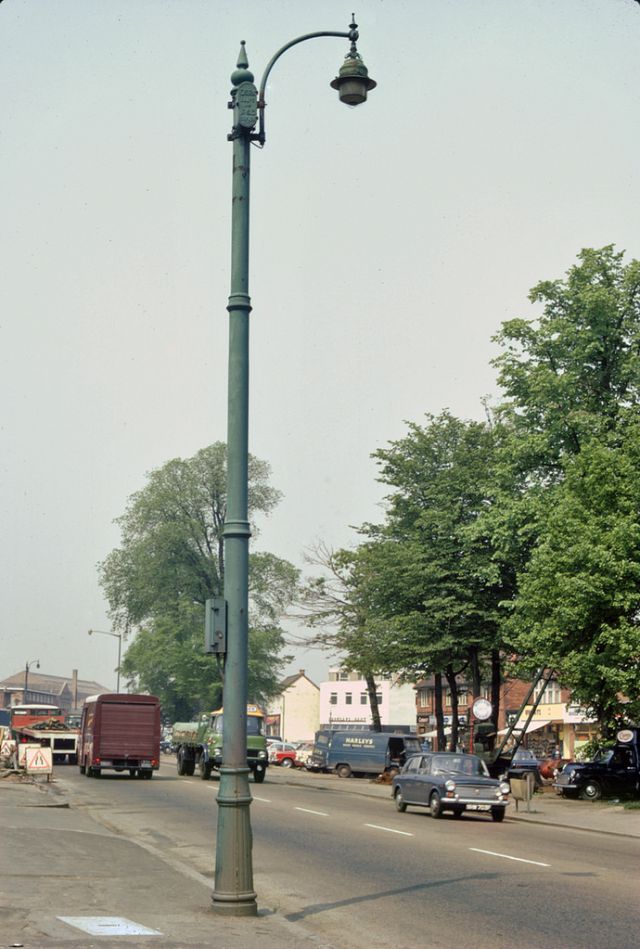Birmingham is the second-most populous city in the United Kingdom, after London, and the most populous city in the English Midlands. It is the cultural, social, financial and commercial centre of the Midlands, and also the main centre of the West Midlands conurbation, which is the third most populated urban area in the United Kingdom.
The wider Birmingham metropolitan area is the second largest in the United Kingdom. Birmingham is frequently referred to as the United Kingdom's "second city".
Here below is a set of color photos from Geoff Dowling that captured street scenes of Birmingham in the 1960s.
 |
| Five ways looking along the Hagley Road from the top of a bus |
 |
| Gents toilet, Alcester Rd., Kings Heath, Birmingham |
 |
| The Corporation Street looking north towards the Central Fire station (white building with clock tower), Birmingham |
 |
| Icknield Square corner shop was off Monument Rd., quite near Monument Lane station, this little shop and gas lamp was on one of the corners |
 |
| Lamp situated on Birmingham Coventry Rd. (A45) by the Wheatsheaf Junction |
 |
| Moat Lane, Birmingham |
 |
| Nechells Park Road, Birmingham |
 |
| RCA 277, an early Bedford van conversion is serving customers on a hot day in Kings Norton Park, Birmingham |
 |
| Re-development near Bristol Cinéma, Birmingham |
 |
| Smallbrook Ringway, Birmingham |
 |
| The Bull Ring, Birmingham |
 |
| The Robin Hood Cinema on the corner of Stratford Rd. and Ingestre Rd., Hall Green, Birmingham |
 |
| The signpost on the corner of Vicarage Rd. and Alcester Road in Kings Heath, Birmingham |
 |
| View of Soho Hill taken from Hockley Brook in Birmingham |
 |
| A fabric body Austin Seven parked up in Fleet Street off Newhall street in Birmingham |
 |
| Auchinleck House, Birmingham |
 |
| Bull Ring Centre & Woolworths, Birmingham |
 |
| Cannon Hill Park, Tulip Festival time, Birmingham |
 |
| Chamberlain Square from the new library site |



